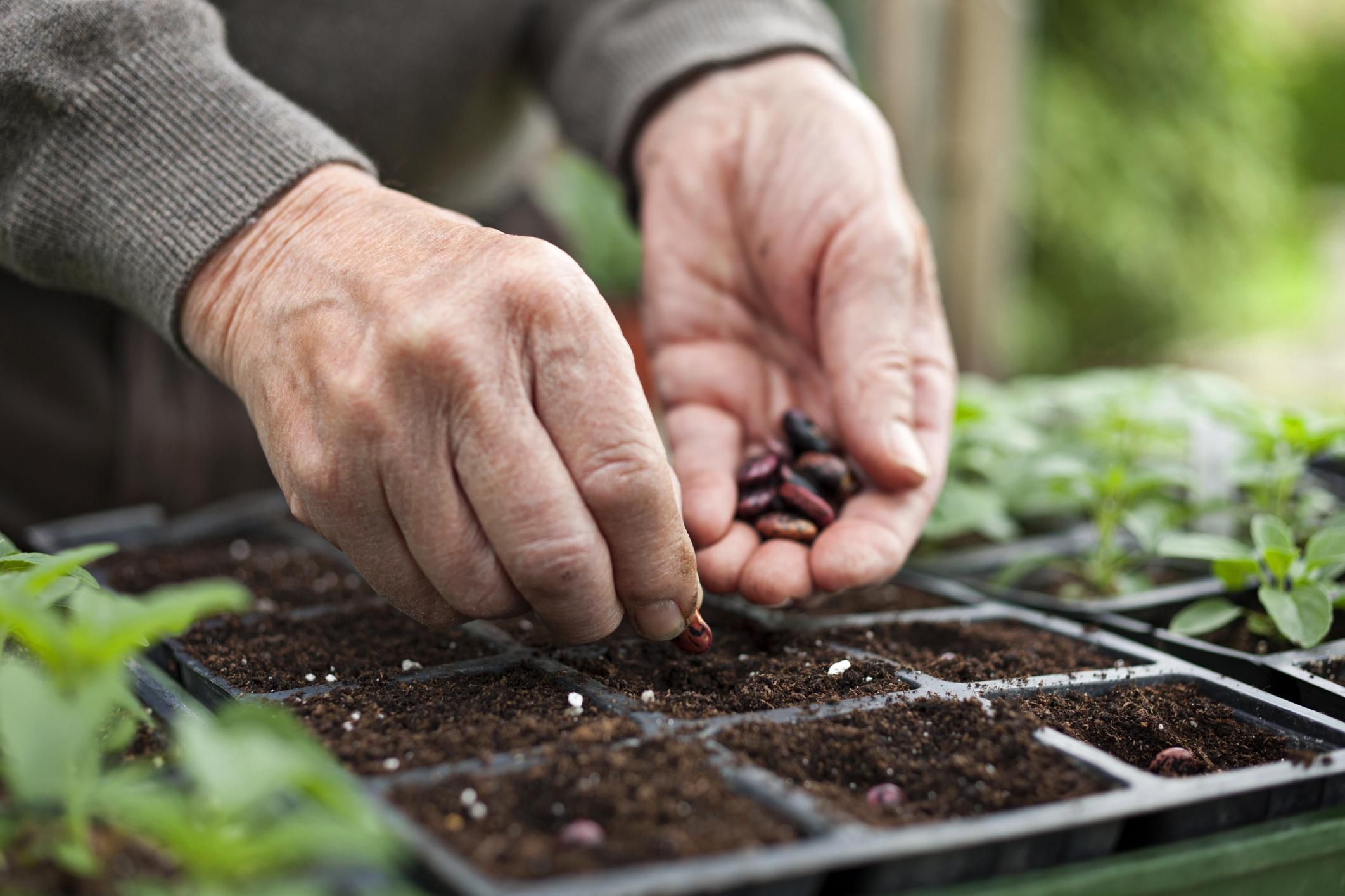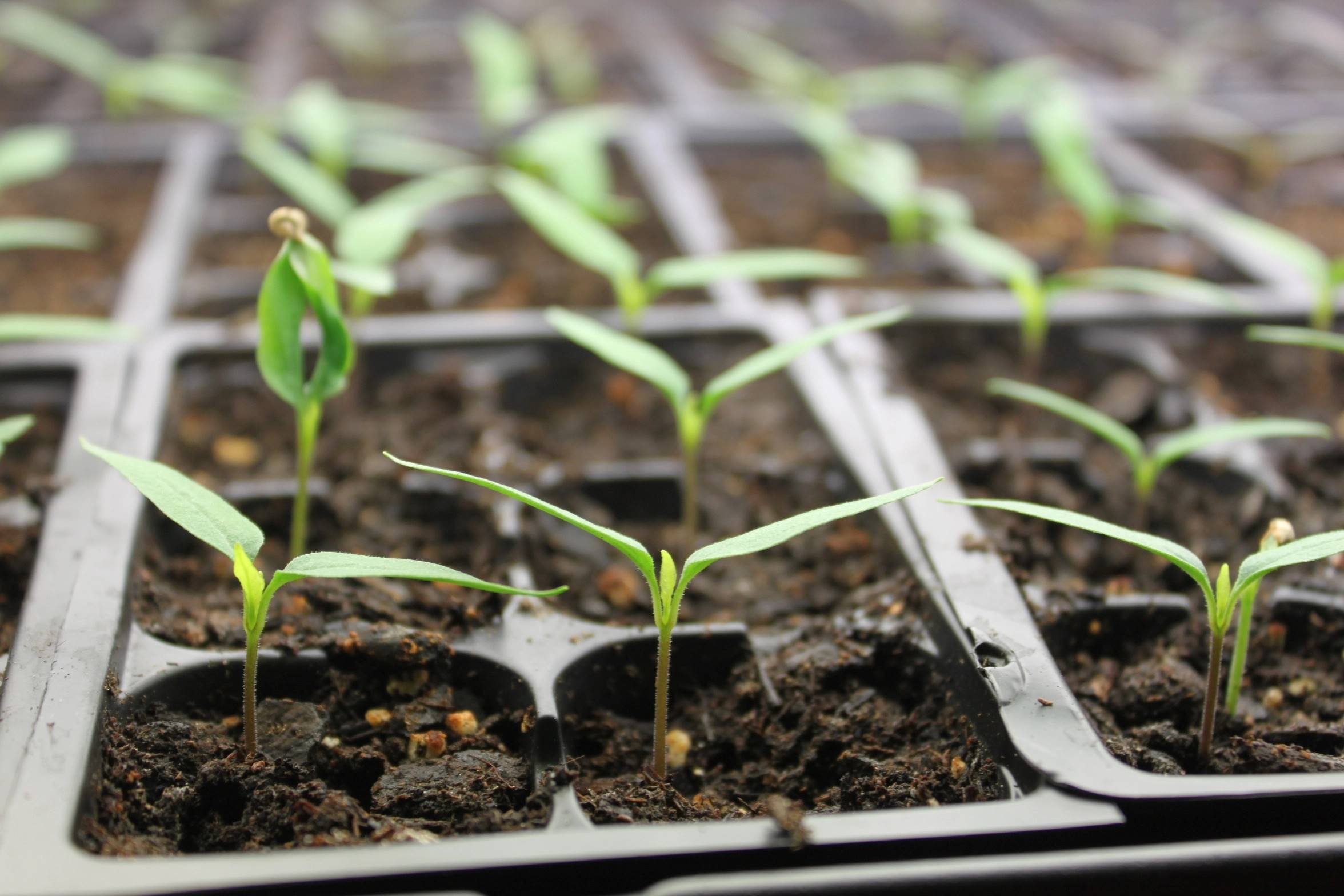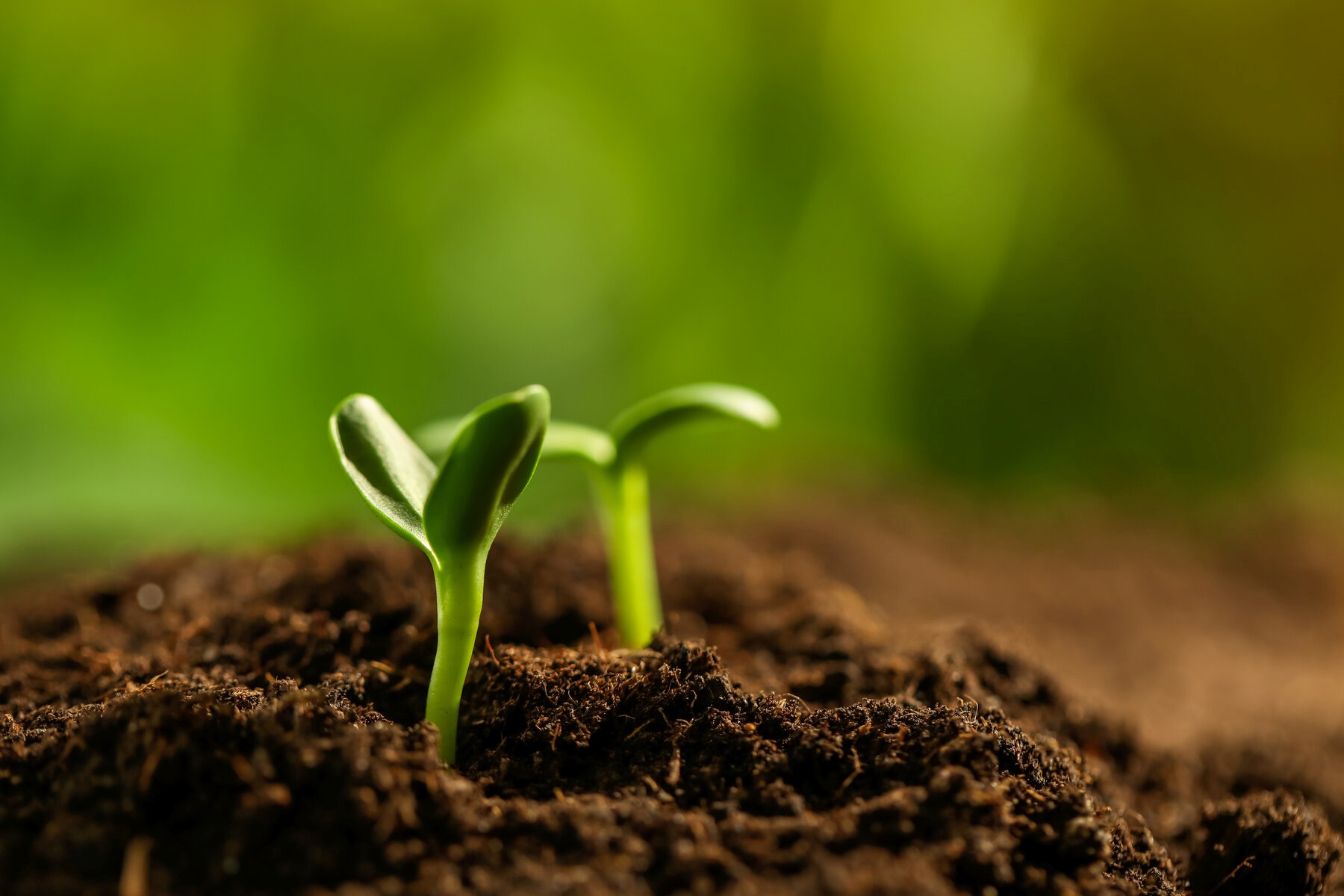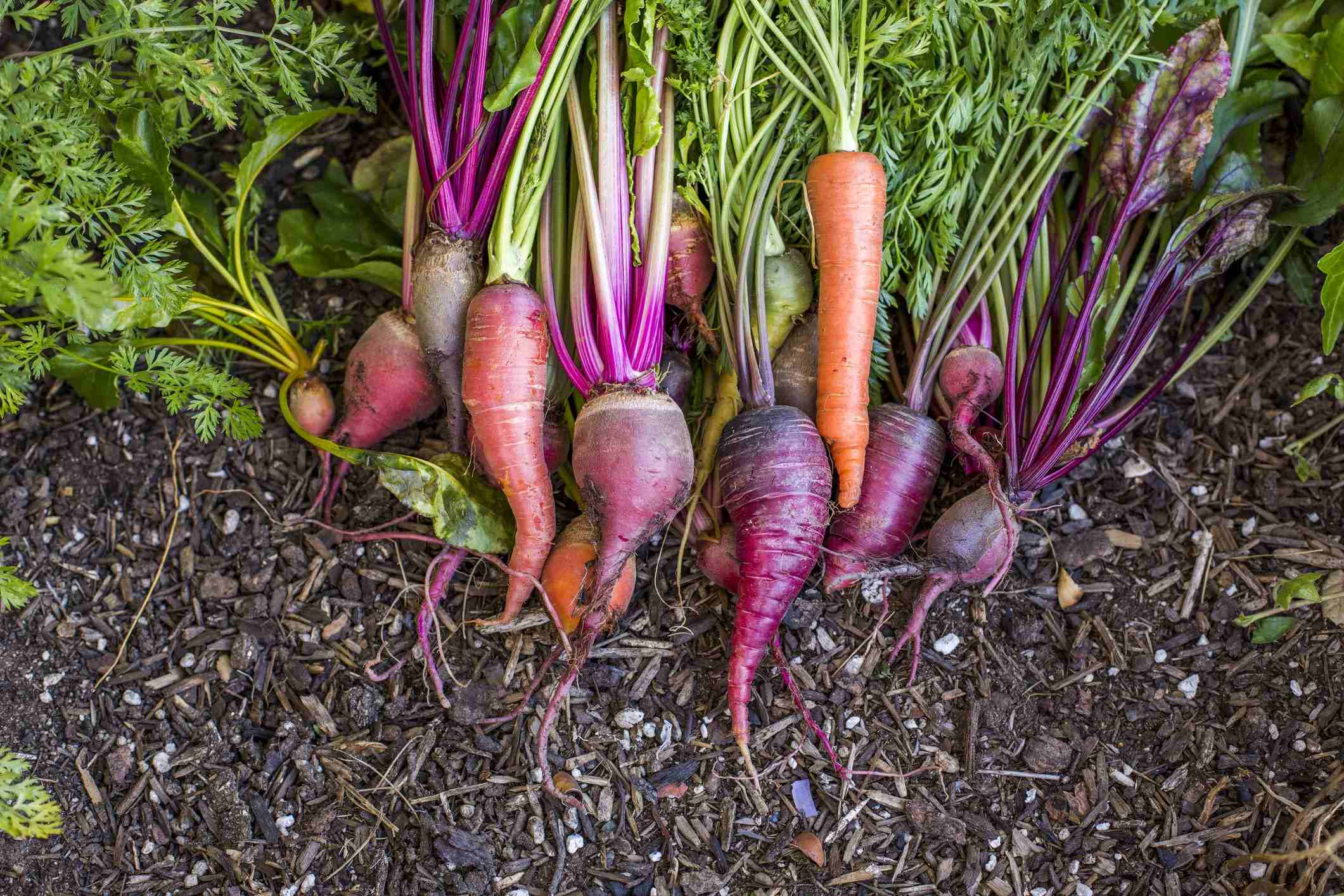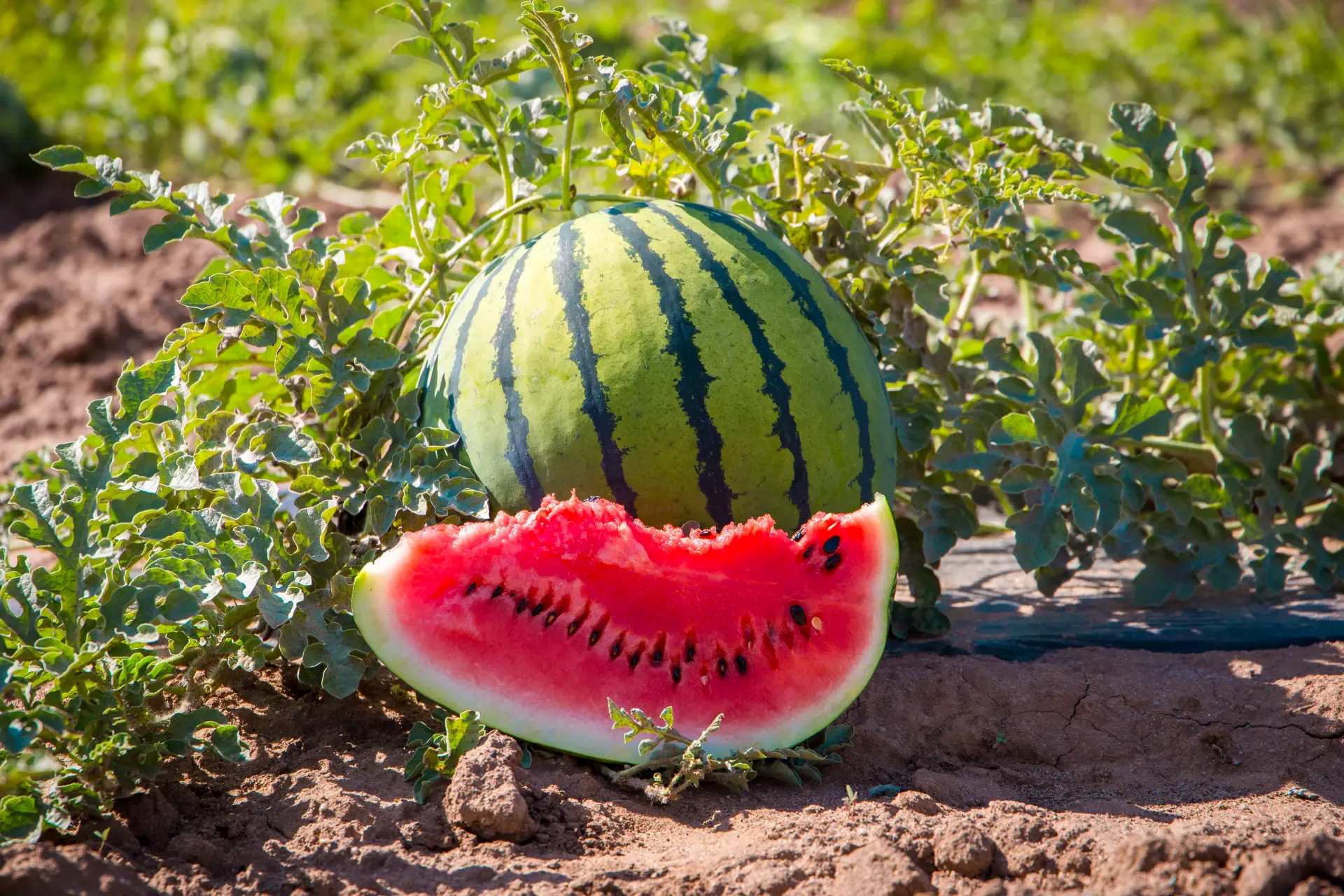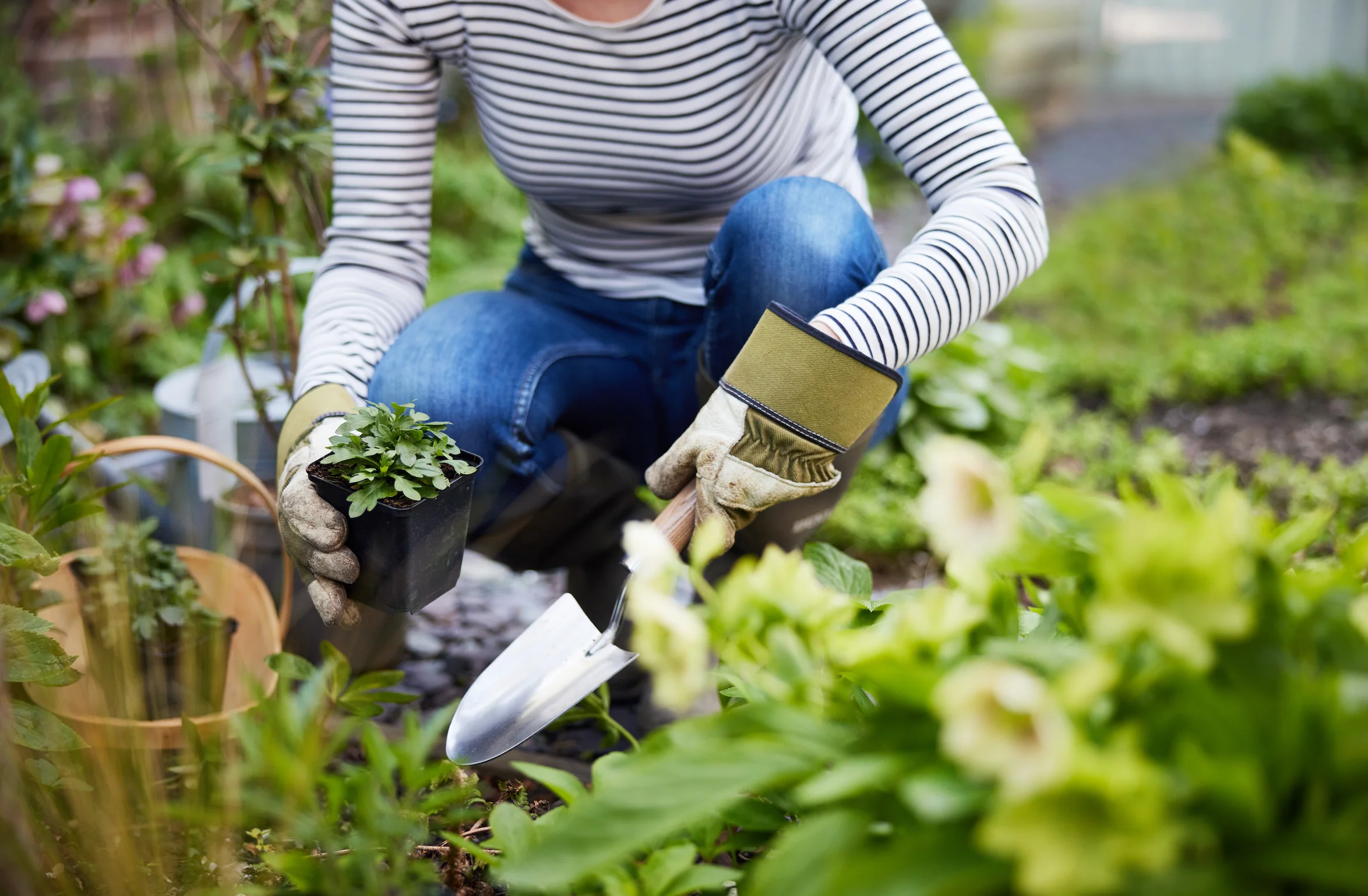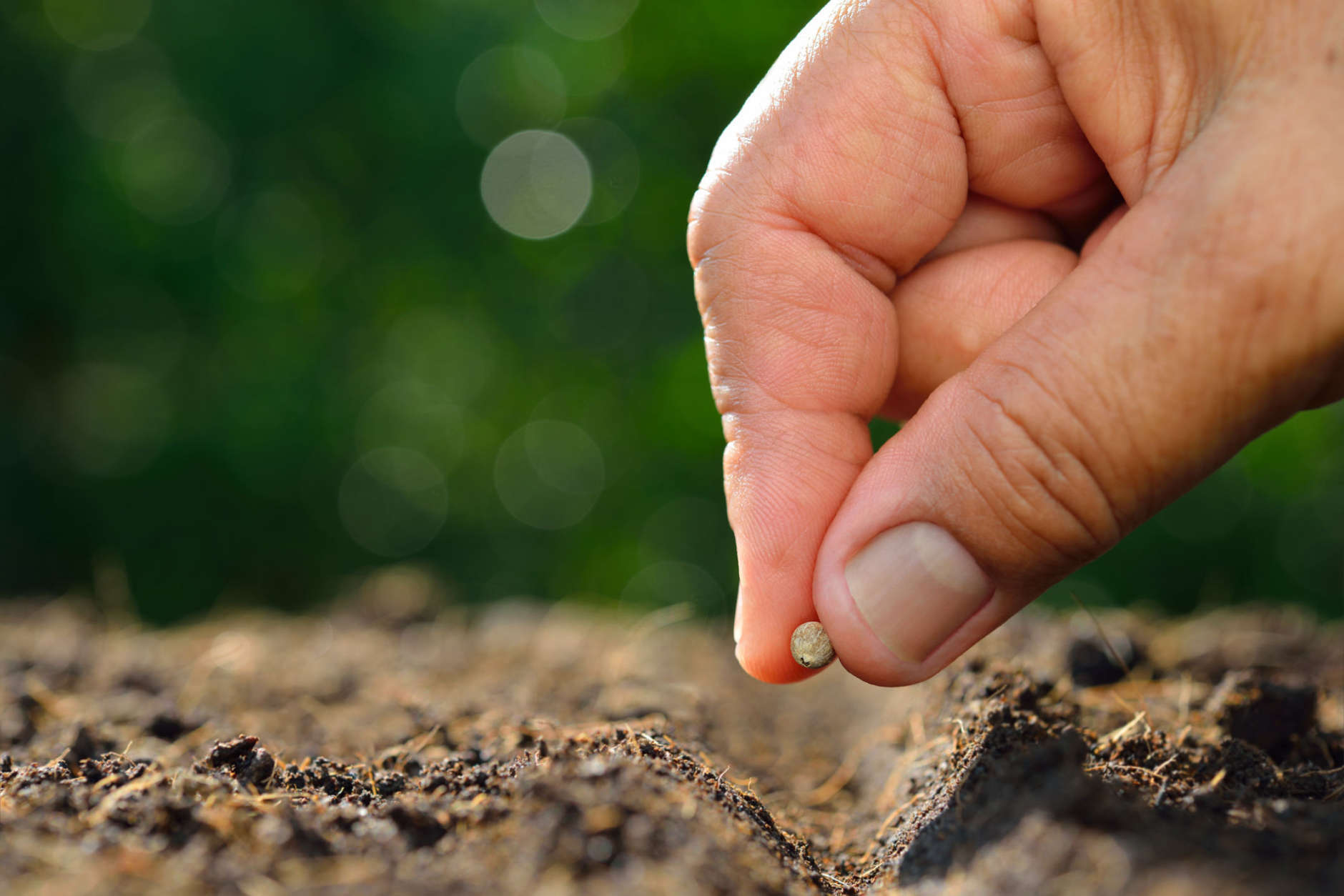Home>Types of Gardening>Edible Gardening>When To Start Planting Onions
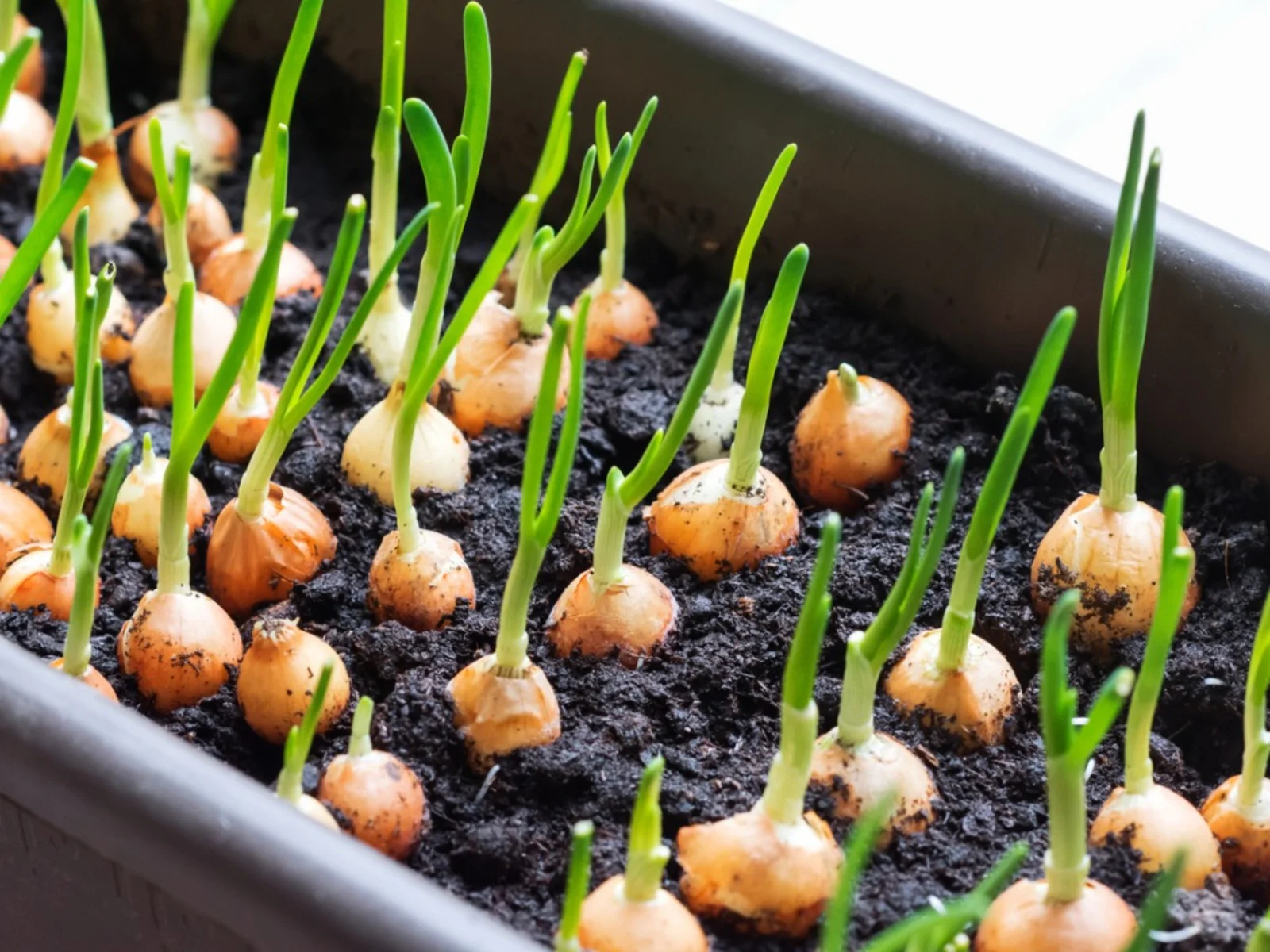

Edible Gardening
When To Start Planting Onions
Modified: January 22, 2024
Discover the best time to start planting onions in your edible garden. Get expert tips and advice for successful onion cultivation.
(Many of the links in this article redirect to a specific reviewed product. Your purchase of these products through affiliate links helps to generate commission for Chicagolandgardening.com, at no extra cost. Learn more)
Table of Contents
Introduction
Welcome to the fascinating world of edible gardening! There’s something truly satisfying about growing your own food, and one of the most rewarding crops to cultivate is onions. Not only do they add flavor and aroma to countless dishes, but they also provide a range of health benefits. Whether you’re a seasoned gardener or just starting out, this comprehensive guide will help you navigate the ins and outs of onion cultivation.
Onions are versatile and can be grown in various climates, making them an excellent choice for edible gardening enthusiasts around the world. From their humble beginnings as tiny seeds or dormant sets, onions grow into bountiful crops that can be harvested and enjoyed throughout the year. But when is the best time to start planting onions? Understanding the climate requirements, proper planting techniques, and essential care practices will ensure a successful harvest.
This article will provide you with all the information you need to know about the ideal time to plant onions, how to prepare the soil for planting, and the different methods of planting onion sets or seeds. We will also delve into the maintenance required to keep your onion plants healthy and thriving until harvest time. So, grab your gardening gloves and let’s dive into the wonderful world of onion cultivation!
Climate Requirements for Onions
Onions are cool-season crops that thrive in specific climatic conditions. Understanding the ideal climate requirements for onions is crucial to ensure a successful harvest. Here are the key factors to consider:
- Temperature: Onions prefer moderate temperatures ranging from 55°F to 75°F (13°C to 24°C). They can tolerate cooler temperatures, but extremely hot weather can hinder their growth and lead to smaller bulbs.
- Day Length: Onions are categorized into three types based on their response to day length: short-day, long-day, and intermediate-day varieties. Short-day onions require 10-12 hours of daylight to form bulbs, making them suitable for southern regions with shorter daylight periods. Long-day onions need 14-16 hours of daylight and are best suited for northern regions. Intermediate-day onions fall between the two and are suitable for regions with moderate day lengths.
- Soil: Onions thrive in well-drained, fertile soil with a pH level between 6.0 and 7.0. They do best in loose, sandy loam soil that retains moisture but avoids excessive waterlogging. Prior to planting, it’s essential to amend the soil with organic matter to improve its structure and fertility.
- Sunlight: Onions require full sun exposure, ideally receiving at least 6-8 hours of direct sunlight per day. Adequate sunlight ensures proper bulb development and encourages robust growth.
- Frost: While onions can tolerate light frosts, prolonged exposure to freezing temperatures can damage or kill the plants. Therefore, it’s essential to cultivate onions during the appropriate time of year to avoid frost-related issues.
- Growing Zone: Onions can be successfully grown in various USDA hardiness zones, ranging from Zone 3 to Zone 10. Understanding your specific growing zone will help determine the best time to plant onions in your area.
By selecting onion varieties suitable for your specific climate and growing conditions, you can ensure optimal growth and a bountiful harvest. Understanding and catering to the climate requirements will set the stage for successful onion cultivation.
Choosing the Right Time to Plant Onions
Timing is crucial when it comes to planting onions. The ideal time to plant onions depends on various factors such as your climate, the onion variety you’ve chosen, and the purpose of growing them. Here are some key considerations to help you determine the right time to plant onions:
- Spring or Fall: Onions can be planted in either spring or fall, depending on your growing zone and the specific onion variety. Spring planting is more common in regions with colder winters, while fall planting is popular in regions with mild winters. Fall planting allows the onions to establish their root system before going dormant during winter, resulting in early growth and larger bulbs in the following spring.
- Last Frost Date: One of the essential factors to consider is the estimated last frost date in your area. Onions are generally cold-hardy, but they should be planted after the last frost date to avoid any damage. Check with your local agricultural extension or use online resources to determine the average last frost date in your region.
- Day Length: Different onion varieties have specific day length requirements for bulb formation. Determine whether the variety you’ve chosen is a short-day, long-day, or intermediate-day onion. Planting the onions at the appropriate time in relation to the local day length will ensure proper bulb development. For example, short-day onions should be planted in late fall or early winter in southern regions, while long-day onions are typically planted in early spring in northern regions.
- Soil Temperature: Onions prefer to be planted in soil temperatures ranging from 50°F to 75°F (10°C to 24°C) for optimal germination and growth. Use a soil thermometer to measure the temperature at a depth of 4-6 inches (10-15 cm). If the soil temperature is too low, it’s best to wait until it reaches the ideal range before planting.
- Seed or Transplants: Decide whether you want to start onions from seeds or transplants. Seeds offer a wider variety of onion options, but they require more time and effort. Transplants, also known as sets or seedlings, are easier to work with and provide a head start in the growing process.
By considering these factors and understanding the specific requirements of your onion variety, you can choose the right time to plant onions that will optimize their growth and ensure a successful harvest. Remember to refer to local gardening resources and consult experienced gardeners in your area for specific guidance based on your climate and growing conditions.
Preparing the Soil for Onion Planting
Proper soil preparation is essential for the successful growth of onions. Creating a nutrient-rich and well-drained growing environment will give your onion plants the best chance of thriving. Here are the key steps to prepare the soil for onion planting:
- Clear the Area: Begin by clearing the planting area of any weeds, rocks, or debris. Remove any large clumps of soil to create a smooth surface for planting.
- Test the Soil: Conduct a soil test to determine the pH level and nutrient composition of your soil. Onions prefer a slightly acidic soil with a pH between 6.0 and 7.0. Based on the results of the soil test, you may need to amend the soil with organic matter or adjust the pH level using lime or sulfur.
- Improve Drainage: Onions thrive in well-drained soil. If your soil tends to be heavy or clay-like, incorporate organic matter such as compost, well-rotted manure, or peat moss into the soil to improve its drainage and structure. This will prevent waterlogging and allow the onion roots to access oxygen more easily.
- Add Fertilizer: Before planting, work in a balanced granular fertilizer or a mix specifically formulated for onions, following the package instructions. This will provide the necessary nutrients for healthy growth and bulb development.
- Loosen the Soil: Use a garden fork, tiller, or hand tools to loosen the soil to a depth of 8-12 inches (20-30 cm). Break up any compacted soil and remove any large clumps or rocks. The loose soil will make it easier for the onion roots to establish and penetrate the soil.
- Level and Rake: After loosening the soil, level the surface and use a rake to create a smooth and even planting bed. This will make it easier to plant the onion sets or seeds at the right depth.
- Water the Soil: Before planting, thoroughly water the soil to ensure even moisture distribution. This will help the onion roots establish quickly and encourage healthy growth.
By taking the time to prepare the soil properly and provide the necessary nutrients, drainage, and structure, you will set the foundation for healthy onion plants with optimal yields. Don’t rush the soil preparation process, as it will greatly contribute to the success of your onion crop.
Planting Onion Sets or Seeds
When it comes to planting onions, you have two options: onion sets or onion seeds. Both methods have their advantages, and the choice depends on your preference and the availability of resources. Here’s what you need to know about planting onion sets or seeds:
- Onion Sets: Onion sets are small, dormant bulbs that have been grown from seeds in the previous season. They are readily available at garden centers and nurseries. Planting onion sets is a convenient method as they establish quickly and require less time and effort. Choose sets that are firm, free from soft spots or mold, and about the size of a marble.
- Onion Seeds: Growing onions from seeds offers a wider variety of onion types and is often more cost-effective if you have the time and patience. Start seeds indoors about 8-10 weeks before the last frost date or direct sow them in the garden when the soil temperature reaches the optimal range. Thin the seedlings to provide sufficient spacing for bulb development as they grow.
Here are the steps to plant onion sets or seeds:
- Select the Right Spacing: Whether you’re planting sets or seeds, onions need adequate space to grow and develop bulbs. Space them about 4-6 inches (10-15 cm) apart in rows, with 12-18 inches (30-45 cm) between each row.
- Planting Depth: Plant onion sets or seeds at a depth of about 1 inch (2.5 cm) into the soil. If the soil is heavy or compacted, plant them slightly shallower.
- Positioning: Place the sets or sow the seeds with the pointed end upwards, ensuring that they are upright and not flat in the soil. This will encourage proper growth and bulb development.
- Cover and Firm the Soil: After planting, cover the sets or seeds with soil and gently firm it around them. Avoid compacting the soil too much to allow the roots to penetrate easily.
- Watering: Give the newly planted onion sets or seeds a thorough watering to settle the soil and help them establish their roots. Afterward, water regularly to maintain consistent soil moisture throughout the growing season.
Whether you choose onion sets or seeds, proper planting techniques and care will set the stage for healthy onion plants and a bountiful harvest. Remember to follow the specific instructions provided with the sets or seeds and adjust the planting depth and spacing as necessary based on the variety you’re growing.
Caring for Onion Plants
Caring for onion plants is essential to promote their growth, prevent diseases, and maximize bulb development. By providing the right conditions and practicing regular maintenance, you can ensure healthy onion plants and a successful harvest. Here are key care practices for onion plants:
- Watering: Onions need consistent moisture throughout their growing season, especially during dry periods. Water the plants deeply once or twice a week, providing enough water to moisten the soil to a depth of 6-8 inches (15-20 cm). Avoid over-watering, as excessive moisture can lead to disease.
- Weeding: Keep the onion beds free from weeds, as weeds can compete with the onions for nutrients, water, and sunlight. Regularly weed the area, taking care not to disturb the shallow-rooted onion plants.
- Mulching: Applying a layer of organic mulch, such as straw or shredded leaves, around the onion plants will help suppress weeds, retain moisture, and regulate soil temperature. Mulching also provides a protective barrier against soil-borne diseases.
- Fertilizing: Onions benefit from regular fertilization to ensure healthy growth and bulb development. Feed the plants with a balanced fertilizer or a specially formulated onion fertilizer every four to six weeks throughout the growing season, following the package instructions.
- Thinning: If you started onions from seeds, thin them once they reach a height of 4-6 inches (10-15 cm). Thin the seedlings to the recommended spacing, allowing enough room for bulb development. Thinning helps avoid overcrowding, improves air circulation, and reduces the risk of diseases.
- Pest and Disease Control: Monitor your onion plants regularly for signs of pests and diseases. Common onion pests include onion maggots, thrips, and onion flies. Implement preventive measures such as using row covers or insecticidal soaps and sprays as needed. To prevent diseases, practice crop rotation and avoid planting onions where related crops have grown in the past three years.
- Staking: In regions with strong winds or heavy rainfall, provide support to tall onion varieties by staking them. This will prevent the plants from bending or breaking and ensure proper bulb development.
- Harvesting: Harvest onions when the tops start to turn yellow and fall over. Gently lift them with a garden fork, being careful not to bruise or damage the bulbs. Allow the harvested onions to dry and cure before storing them in a cool, dry, and well-ventilated area.
Caring for your onion plants with regular watering, weeding, fertilization, and pest control will promote healthy growth and increase the likelihood of a bountiful onion harvest. Stay vigilant and address any issues promptly to ensure the well-being of your onion crop.
Harvesting Onions
Harvesting onions is an exciting moment for any gardener, as it marks the culmination of their hard work and patience. Knowing when and how to harvest onions is crucial to ensure maximum flavor and storage life. Here is a step-by-step guide on how to harvest onions:
- Observation: Start monitoring your onion plants as they near maturity. Look for signs that indicate the onions are ready to harvest. The tops of the onions will start to turn yellow and wilt, and the necks will become soft and begin to dry out.
- Selective Harvesting: Onions do not all mature at the same time, so it’s best to harvest them individually as they reach maturity. Avoid letting the onions stay in the ground for too long, as this can result in overripening and a decrease in storage quality.
- Timing: Harvesting usually takes place in late summer or early fall, depending on your growing region and the specific onion variety. Refer to the recommended days to maturity for the variety you planted as a general guideline.
- Loosening the Soil: Before harvesting, gently loosen the soil around the base of the onion with a garden fork or hand tool. This will help ease the onion’s removal without damaging the roots or bulbs.
- Lifting the Onions: Use your hands or a garden fork to lift the onions from the soil. Grip the onion bulb near the base, avoiding pulling on the tops or foliage. Be careful not to bruise or damage the bulbs during the lifting process.
- Drying and Curing: After harvesting, it’s essential to dry and cure the onions before storing them. Lay them out in a single layer in a well-ventilated and shady area. Allow the onions to dry for a few days to a couple of weeks until the necks become completely dry and the outer skin turns papery.
- Storing: Once the onions are fully cured, trim off the dried tops, leaving about an inch (2.5 cm) of the neck. Brush off any excess dirt, but avoid removing the outermost layer of skin. Place the cured onions in a mesh bag, crate, or other well-ventilated container. Store them in a cool, dry, and dark location with temperatures around 32°F to 40°F (0°C to 4°C) and low humidity.
- Long-Term Storage: Some onion varieties have better storage capabilities than others. Generally, well-cured and properly stored onions can last for several months up to a year, depending on the variety and storage conditions.
Harvesting onions at the right time and following proper drying and storage practices will ensure the best flavor, texture, and longevity of your harvested onions. Enjoy the satisfaction of bringing in your homegrown onions and savor the flavors they add to your culinary creations for months to come.
Conclusion
Growing onions can be a rewarding and satisfying experience for edible gardening enthusiasts. By understanding the climate requirements, choosing the right time to plant, preparing the soil, and caring for the onion plants, you can enjoy a bountiful harvest of flavorful and nutrient-rich onions.
Remember to consider your specific climate, as well as the day length requirements and hardiness zones for different onion varieties. Adequate soil preparation, including testing, improving drainage, and adding necessary nutrients, will create an ideal growing environment for your onions.
Whether you choose to plant onion sets or grow onions from seeds, be sure to follow the proper planting techniques, including spacing, planting depth, and positioning. Throughout the growing season, pay attention to watering, weeding, fertilizing, and pest control to ensure healthy onion development.
When the time comes for harvest, observe the signs of maturity, harvest selectively, and allow the onions to dry and cure properly before storing them in cool and dry conditions. This will help preserve their flavor and extend their shelf life.
With patience, care, and attention to detail, you can enjoy the satisfaction of growing your own onions. Experiment with different onion varieties and explore the endless possibilities they bring to your culinary endeavors. So, roll up your sleeves, dig your hands into the soil, and embark on the wonderful journey of edible gardening with onions.
